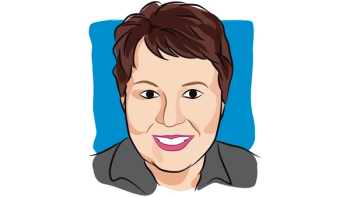
Radiation Treatment Help From a Breast Cancer Survivor
Breast cancer survivor looks back and describes her radiation treatment and shares her tips.
After chemotherapy, I needed radiation treatment on the affected side—facing yet another cancer treatment and delay to the return of the normalcy I craved after chemotherapy. Another cancer treatment? Argh. Some find radiation easier than chemotherapy, and that was true for me, but everyone is different. Here is what I wish I had known going in to radiation as I look back several years later.
Radiation is a true marathon run. Though physically easier than chemotherapy, my radiation was daily and I was already tired from chemotherapy. Daily treatments made radiation a time commitment and a tiring, tough process. It was hard to lose my privacy daily, and the mechanical nature of the large machines involved was emotionally draining to me. I say: Be gentle with yourself. Try to make friends in the radiation waiting room—you may be seeing some of these people for a while. Allow that you are still running the cancer marathon and it is not a sprint.
Watch for radiation side effects. Pay attention. Read the literature. Short-term there can be burning of the skin, though actively treated right after each radiation session, and there is an ongoing fatigue that isn’t easy to describe. The long-term consequences included a permanent change in skin color of the affected side, osteopenia (bone mass loss) to the extent that I now take calcium supplements, and fatigue. Read and keep the literature.
Toward the end of radiation, I got little red bumps on the skin of my affected breast! My radiation oncologist figured out I was allergic to the parabens in the moisturizing lotion they had me applying all the time. When I stopped, the red bumps went away. Another breast cancer survivor wasn’t as fortunate—her red bumps turned out to be a manifestation of her cancer and required a biopsy and additional treatment! Her experience reminded me to be prompt in reporting my side effects to my doctor.
A “strange” fatigue: Many of us find the fatigue to be different than any other fatigue ever experienced. It isn’t end-of-the-day fatigue or fatigue after exercise or hard work. I felt a little like a worn-out cranky toddler--I couldn’t sleep it off and yet I had no energy and I literally didn’t know what to do with myself. Give yourself breaks when you need them, do easier stuff when you feel this way, and happily the fatigue will go away when the radiation is done.
The last day: I had heard about mixed emotions on the last day of radiation, which, can mark the last day of active treatment. This was the last time I would see the technicians. It was a celebration because I no longer had to come in daily for treatment. Cancer now would now have less impact on my daily life and I would finally have time and privacy to recover. Still, all the attention and examinations by the doctors and their skilled staff would happen less often, and that was frightening. It was good to be done with active treatment but it also meant that you could feel more alone. Continuing with my breast cancer support group and connecting with my cancer friends in person and online helped me through this time.
So I, as a sample size of one, I know, I say to read the information provided, rest, and give yourself time to heal—time measured in weeks and months, not in days. Report any symptoms to your doctor right away. You will get through your radiation, too. You are a cancer survivor and you can do this!





